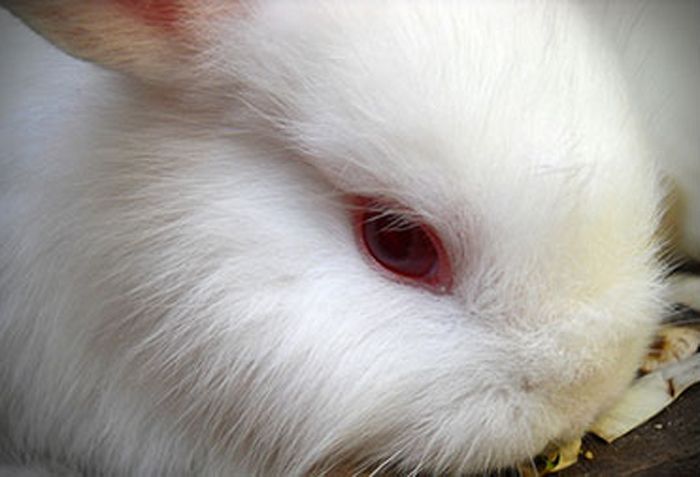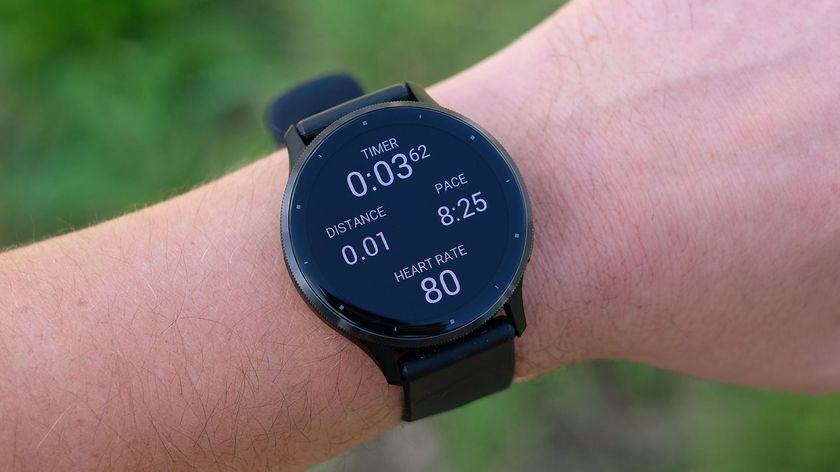
Animal Data Is Not Reliable for Human Health Research (Op-Ed)

Theodora Capaldo is president of the New England Anti-Vivisection Society. Founded in 1895, NEAVS is a Boston-based, national animal advocacy organization dedicated to ending the use of animals in research, testing and science education. Through research, outreach, education, legislation, and policy change, NEAVS advocates for replacing animals with modern alternatives that are ethically, humanely and scientifically superior. Capaldo contributed this article to Live Science's Expert Voices: Op-Ed & Insights.
Last month, the National Institutes of Health (NIH) announced in the journal Nature that it will ask grant applicants to use both male and female animals in biomedical research. Researchers have used mostly males due to the belief that hormone cycles impact data, an assumption now disproven.
The piece — written by Janine Clayton, director of the NIH's Office of Research on Women's Health, and NIH Director Francis Collins — states that "the overreliance on male animals and cells in preclinical research obscures key sex differences that could guide clinical studies." It goes on to explain how biological sex differences impact disease and drug effects in men and women differently and the adverse consequences of relying on research data mainly from male animals.
Though the statements are well intended, the NIH is short in its vision to correct these problems by including female animals in research. Even with added data from female animals, there is no reason to believe the research will be any more applicable to humans.
Instead of attempting to fix a permanently broken animal-based system, NIH should devote its resources to a new, modern and nonanimal research paradigm. [Should Animals Be Used in Laboratory Testing? (Op-Ed )]
Many drugs that appear safe and effective in animals fail in humans, or cause significant harm, and even death. A 2004 study from the U.S. Food and Drug Administration found that 92 percent of drugs entering clinical trials following animal testing fail to be approved. Of those approved, half are withdrawn or relabeled due to severe or lethal adverse effects not detected during animal tests.
The NIH policy announcement also goes on to suggest "inadequate inclusion of female cells and animals in experiments and inadequate analysis of data by sex may well contribute to the troubling rise of irreproducibility in preclinical biomedical research." However, it ignores the more basic flaw in research: the chasm between data from animal studies and successfully using that data to benefit humans.
Sign up for the Live Science daily newsletter now
Get the world’s most fascinating discoveries delivered straight to your inbox.
Before examining the data, consider the logic. Mice or other animals in labs are not little people. In 2011, the Institute of Medicine concluded there was no current need for chimpanzees in biomedical research. The NIH responded by retiring 90 percent of its chimpanzees. If humans' closest relative — humans and chimpanzees share up to 98 percent of their genes — is not useful for human research, why would any other species be? There are too many variables in anatomy, gene expression, metabolism, immune functioning, etc. among species to safely and predictably extrapolate data.
The evidence against using animals as models for humans is striking. Here are just a few examples:
- A 2008 study in the journal Alternatives to Laboratory Animals showed that more than 80 HIV/AIDS vaccines successful in nonhuman primates failed in human trials.
- According to a 2004 study in the journal Stroke, more than 4,000 studies report efficacy of more than 700 treatments of stroke in animal models. Yet none of the approximately 150 of these treatments tested in humans showed clinical benefit, as reported in a 2005 paper in the International Journal of Neuroprotection and Neuroregeneration.
- Drugs intended to reduce inflammation in critically ill patients, previously tested in mice, failed in nearly 150 human critical trials according to a 2013 study in Proceedings of the National Academy of Sciences.
The list goes on and on (visit the New England Anti-Vivisection Society (NEAVS) website for more). Along with the evidence, more and more experts are acknowledging the inherent limitations and flaws of using animals:
"We have moved away from studying human disease in humans … We all drank the Kool-Aid on that one, me included … The problem is that it hasn't worked, and it's time we stopped dancing around the problem … We need to refocus and adapt new methodologies for use in humans to understand disease biology in humans," said former NIH Director Dr. Elias Zerhouni in the June 21, 2013 NIH Record.
The U.S. National Academy of Sciences and the National Research Council published a report in 2007 in The National Academies Press calling for a change in the system for evaluating medications, away from animal tests toward in vitro, alternative methods. Animal use diverts limited resources away from modern developments that will better lead to real breakthroughs.
Researchers are genetically engineering animals to be more humanlike, even though our closest genetic relative has been declared no longer needed for biomedical research. [What's Genetic Engineering? ]
Why not shift funding to promising animal-free technologies? What other areas of science remain stuck in a model developed more than 100 years ago? To be valid, science must be predictive. To be reliable, it must be consistent. Animal data is neither (e.g., toxicity testing in other species is about as likely as a coin toss in predicting the effect in humans).
The sad truth is, biomedical advancement would be happening in a more timely, cost-efficient, humane and humanly beneficial manner if we would just bite the bullet, end status-quo research, and commit to the new and promising technologies that are either already at our fingertips, or at least within our reach.

News of alternatives to animal use makes headlines daily — renewing faith in what science can and will do once it sets its priorities. For instance, new "organs-on-a-chip" nonanimal technology, recently developed at Harvard University, allows scientists to observe the effects of toxins or drugs. EpiDerm, derived from cultured human skin cells, is more accurate than animal tests in identifying skin irritants. In a study, cited in a 2012 International Journal of Pharmacy and Pharmaceutical Sciences paper, it correctly detected chemicals that irritate human skin, while tests on rabbits were wrong 40 percent of the time. (For more examples, NEAVS maintains a blog on the latest developments.)
As researchers learn more about biological sex differences, it becomes even more problematic — and unscientific — to rely on data derived from different species. Ignoring the unique female genetic makeup is shoddy science, and must be rectified. But ignoring the even more profound differences between species and issuing a fleeting directive to use animals of both sexes is no solution.
To bring more attention to this issue, NEAVS and its affiliate the American Fund for Alternatives to Animal Research (AFAAR) awarded the Fellowship Grant for Alternatives to Animal Research in Women's Health and Sex Differences to a woman interested in developing, validating or using alternatives to animal methods in the investigation of women's health or sex differences. The postdoctoral project advances science, adds another argument against the use of animals for biomedical testing, and supports budding scientists committed to new and better research.
We are in an age of personalized medicine, and sex variability needs prominent consideration. But it is folly to continue our dependency on other species as models for humans. Only by bringing the study of women to a focus equivalent to that of men, accompanied with leaving animal models behind, can the medical breakthroughs we all await be realized.
Follow all of the Expert Voices issues and debates — and become part of the discussion — on Facebook, Twitter and Google +. The views expressed are those of the author and do not necessarily reflect the views of the publisher. This version of the article was originally published on Live Science.











